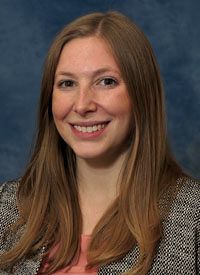Oncology Care Model Practices Await CMS Report Cards
Alyssa Dahl, MPH, CPH, discusses what to watch for when the CMS releases performance results for the Oncology Care Model.
Alyssa Dahl, PhD, MPH, CPH associate professor of oncology and urology at Johns Hopkins Medicine

Alyssa Dahl, MPH, CPH
PP1 True-Up 1
PP2 Initial Reconciliation
Changes to the PBP Methodology
Fewer MEOS Recoupments Expected
Very soon, CMS will release the first performance period one (PP1) true-up and PP2 initial reconciliation results for the Oncology Care Model (OCM). These performance results are eagerly awaited by the 181 oncology practices who have participated in the experimental cost and quality program since 2016. Because this bundled payment model is set up very differently from others that have come before it, we’re keeping our eye on some unique data components.OCM’s first performance period initial reconciliation encompassed episode claims data as of 2 months after the end of the first performance period. For this true-up about to be released, 6 additional months have elapsed, which allows for more complete claims information. Participants who earned a performance-based bonus payment (PBP) in the initial reconciliation will, hopefully, retain their high level of performance, but there is a possibility that positive results could shift backwards. For practices that during PP1 were close to earning a PBP but didn’t make the cut, it’s possible—though entirely speculative—that some of the adjustments recently made to the OCM methodology will help them make it over the line.For practices that didn’t earn a PBP in PP1, we’re hoping to see them achieve that milestone based on the PP2 reconciliation. Most practices spent PP1 gearing up for the OCM and implementing planned interventions to reduce unnecessary hospital stays and emergency department visits and improve care in other ways. As a result, the early impacts of clinical interventions may not have been observable until the PP2 data was available. Practices will be watching for this, as they need to earn a PBP by the PP4 reconciliation in order to remain in the program with one-sided risk. One-sided risk means they would not be penalized for failure to meet savings targets but would continue to share in any savings achieved.Some updates to the PBP methodology, such as broader definitions for some risk adjustment factors, may help increase target prices for certain episodes of care. These changes include expanded criteria for identifying episodes with cancer-related surgery, bone marrow transplants, and clinical trial participation. In addition, the PP2 initial reconciliation will use hospital referral region relative cost estimates from the baseline model, rather than recalculating them as happened for PP1. When using these regional estimates of costliness, uninfluenced by the OCM, target prices will have better comparability and stability.This time around, practices expect to owe fewer monthly enhanced oncology services (MEOS) recoupment payments, for 2 reasons: first, CMS has made the range of service dates for MEOS claims less restrictive due to the difficulty of calculating when an OCM episode of care begins and ends; and second, MEOS claims can now occur 90 days before the episode begins or after the episode ends rather than strictly during the episode period, as was the case in the PP1 initial reconciliation.
Practices are eager and probably also anxious to see their PP2 results, given all of the effort they’ve put into redesigning care thus far. This period represents their second out of only 4 chances to maintain one-sided risk until the end of the program. Although OCM gives practices the framework to enhance their care delivery model and continue to do the right things for their patients, practices are motivated to remain in this program but need it to be financially viable for them.
Alyssa Dahl, MPH, CPH manages healthcare data analytics at DataGen, a healthcare data analytics and policy firm. She conducts research and develops analyses around comparative efficiency, care patterns, and emerging payment models.



